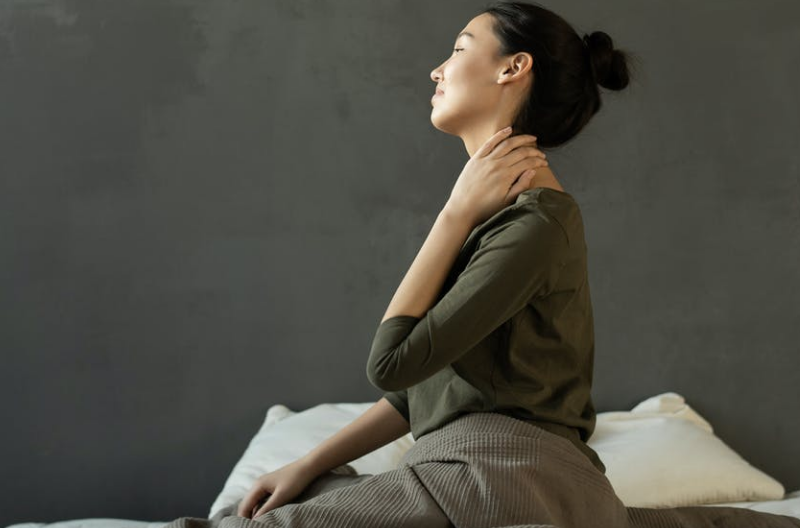
Back pain is one of the most common reasons individuals visit a doctor or take time off work, and it is one of the leading causes of disability in the world.
Fortunately, there are steps you may take to prevent or alleviate the majority of back pain occurrences. However, if prevention fails, essential home therapy and appropriate body mechanics will frequently repair your back within a few weeks while also keeping it operational. Back discomfort is seldom treated with surgery, and most cases are non-surgical.
How Can Tight Muscle Result in Back Pain?
It is common for back muscular tension to be felt throughout our lower body, and it can even affect muscles in the pelvis, hips, and upper legs. Many symptoms, including spasms, cramps, stiffness, and discomfort, are frequently associated with tight lower back muscles. These aches and pains might range from modest but persistent to severe, incapacitating misery.
Various circumstances can cause instability in the back muscles. A variety of factors, including intense physical activity, dehydration, awkward posture, and a bad mattress, can all affect how tight our lower back muscles are, which can result in the symptoms listed above.

Reasons Why You Have Back Pain
Tight muscles in your thighs and hips
According to research, tightness in specific sets of muscles in your thighs and hips may affect the biomechanics of your spine. Examples include the following:
- Tight Hamstrings
The hamstring muscles are responsible for various functions located at the back of each of your thighs. The muscles in this vast and strong group can become tight for multiple reasons, including physical inactivity or a lack of stretching before or after a workout.
When your hamstrings are tight, they shorten in circumference. These modifications can affect the curvature of the lower region of your spine, causing the spine to go out of alignment with the pelvis (hip). As a result, you may experience stiffness in your lower back, which may or may not be accompanied by discomfort. It is common for the stiffness to be more noticeable when you bend your spine forward. Targeted hamstring stretching can help you gradually extend your hamstrings while relieving lower back stiffness and discomfort.
- Tight Hip Flexors
With the help of your iliopsoas muscle, you can elevate your thigh and bring it closer to your torso. Hip flexion is the term used to describe this motion.
Tightness in the iliopsoas muscle might cause stiffness in the portions of your spine that are connected to it. In extreme cases of iliopsoas tightness, spinal instability may develop. It’s also possible that the surrounding spinal tissues become inflamed and irritated, resulting in discomfort.

Spinal Disc Dehydration and Shrinking
The spinal discs are shock-absorbing cushions that sit between your vertebrae and transfer stresses throughout your spine. Age-related alterations in these discs might induce degeneration, affecting their biomechanics.
When a disc degenerates, the fibrocartilage component breaks down, water is lost, and the height of the disc decreases. These alterations may cause spinal stiffness, especially when bending.
Spinal Inflammatory Changes
Inflammation can cause your spine’s joints to stiffen and fuse, resulting in stiffness. Here are two common examples:
- Osteoarthritis
The deterioration of protecting cartilage between the facet joints at the back of your spine is known as osteoarthritis. As a result, your joints produce extra friction when you move, causing discomfort and stiffness. The stiffness is frequently evident in the morning, eases with movement during the day, and returns after prolonged inactivity or rest.
- Ankylosing Spondylitis
Ankylosing spondylitis occurs when spinal inflammation causes progressive fusion of neighboring vertebrae. The illness causes upper and lower back stiffness and discomfort that worsens over time. The stiffness improves typically with activity but not with rest.

Forward Curvature of the Spine
Kyphosis is a forward curvature of the spine that can be seen when looking at the patient from the side (in profile). A certain amount of kyphosis is normal in the thoracic spine. When excessive, kyphosis can cause cosmetic and functional difficulties.
Kyphosis
When you sit for an extended period, the following changes occur in your spine:
- Pressure increases in each spinal segment
- Reduced strength in your upper and lower back muscles
- Reduced nutrition supply to spinal tissues
When you sit on the edge of your chair or lean over your computer, the tension on your spine increases, causing stiffness and pain. Sedentism can aggravate these changes, causing spinal stiffness to develop within an hour of sitting.
Maintain an upright sitting position to minimize back tightness. Roll your shoulders back, ensuring that your ears are above your shoulders and your upper arms are parallel to your body. When sitting in an office chair, try to avoid using the backrest all the time and sit straight to exercise your core muscles.
Comment below to share your thoughts and don’t miss our blog on transcendental meditation to improve overall health.
